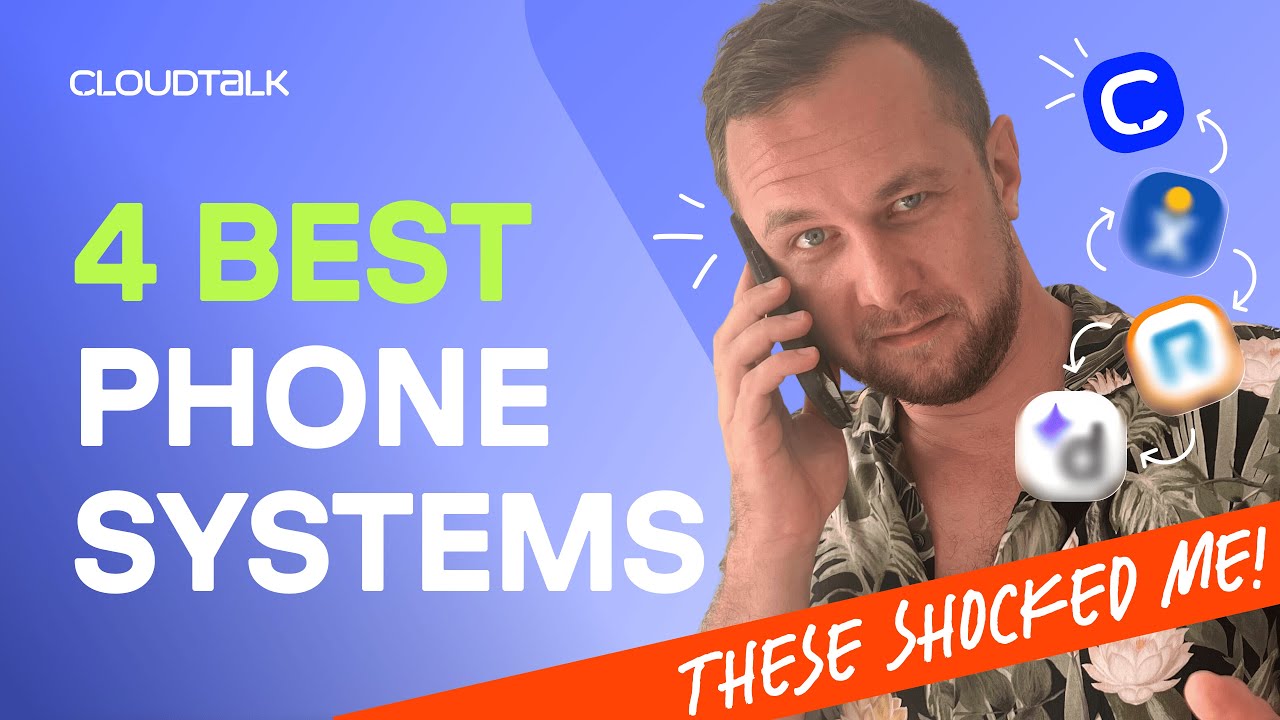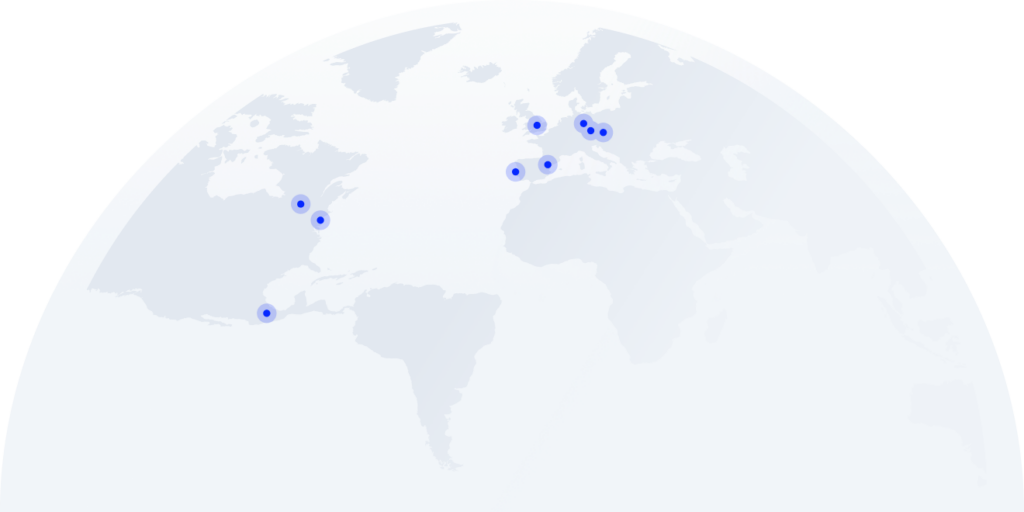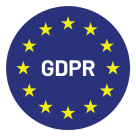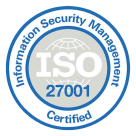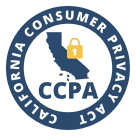
The phone is the most productive sales tool for 41.2% of salespeople¹. So what if you could make that phone twice—or even 10x—more productive?
That’s exactly what a multi-line dialer can do.
Multi-line dialers (also known as multi dialers or call multipliers) allow agents to call multiple numbers simultaneously, reducing idle time and boosting productivity.
If your team is stuck dialing one number at a time, waiting through rings, voicemails, and dropped calls, you are missing out on conversations, leads, and revenue.
In this guide, you’ll learn what a multi-line dialer is, how it works, and why it’s so effective for outbound teams. We’ll walk through the key benefits and risks, show you how it compares to other dialer types and share the best multi-line dialer solutions for 2025.
Key Takeaways:
- Multi-line dialers help agents call multiple leads at once, dramatically improving outbound efficiency.
- Compared to a single line dialer, multi-line tools increase connect rates, but must be carefully managed to avoid spam labeling and compliance violations.
- Top benefits include higher productivity, better sales conversion, and reduced agent downtime.
- They are similar to parallel dialers–but there are some key differences that can impact your customer experience.
- The best multi-line dialer solutions offer customization, compliance features, CRM integrations, and real-time analytics.
See how Parallel Dialers combine mult-dialing productivity with intelligence and compliance.
What is a Multi-Line Dialer?
A multi-line dialer is a type of phone system that calls multiple numbers at once—usually two to four—so agents can reach more leads, faster. As soon as someone answers, it routes that call to an available agent. Any unanswered calls are either dropped or handled automatically by the system.
This setup saves time and helps teams have more real conversations in less time.
Multi-line dialers are especially useful for:
- Sales teams making high volumes of outbound calls
- Call centers handling cold outreach or follow-ups
- Recruiters, debt collectors, and fundraisers who need to reach people quickly
You might also hear them called a call multiplier, multi dialer, or multi caller—these are all the same.
Keep in Mind
Keep in Mind:
Single line dialers differ from multi-line dialers because they only make one call at a time.
Parallel dialers are a specific type of multi-line dialer. They’re built to connect only when someone actually answers, which makes them more compliant and efficient.
How Does a Multi-Line Dialer Work?
A multi-line dialer works by dialing multiple phone numbers at the same time—often two, three, or even more—and instantly connecting an agent to the first person who picks up.
Here’s how the process looks in action:
- The system selects contacts from your list.
- It dials multiple numbers at once (e.g. 3 lines using a triple line dialer).
- As soon as someone answers, that call is routed to a live agent.
- The remaining calls are dropped or redirected based on your settings.
- As soon as the agent is free again, the dialer repeats the process.
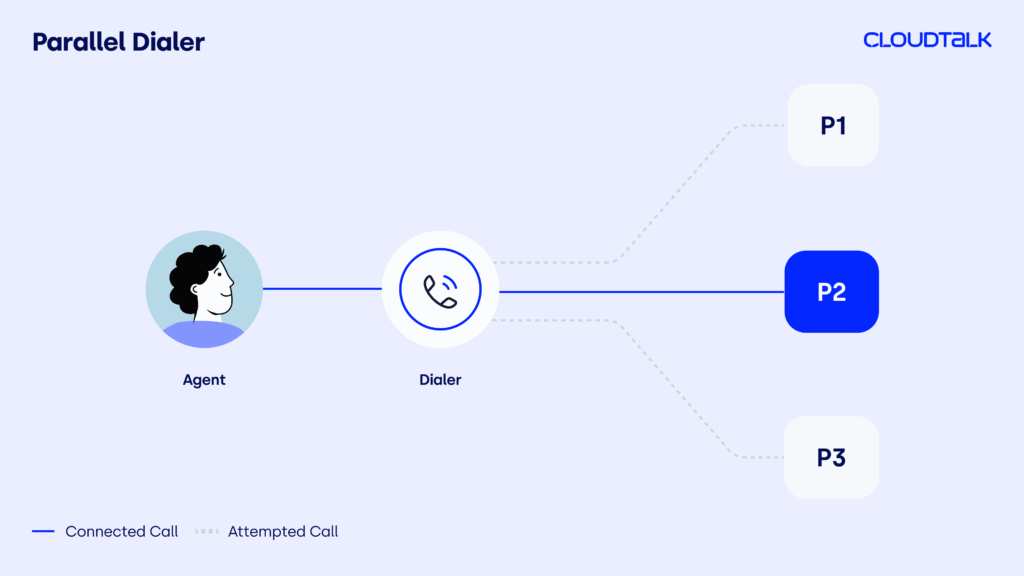
This style of calling uses parallel dialing technology, meaning calls are placed at the same time, not one after the other. That’s what makes it so efficient; no waiting around for one call to finish before starting another.
With some multi-line dialers you can control the number of lines dialed based on your team size, call quality, or time zone targeting.
Others may allow dynamic adjustments to prevent call abandonment or compliance issues.
Compared to older tools, like a single line dialer, multi-line dialers are designed to maximize talk time and minimize downtime.
Make 10x more calls with CloudTalk’s Parallel Dialer.
Multi-Line vs. Other Dialers: What Makes It More Effective?
Not all dialers are created equal—and choosing the right one can make or break your outbound performance. So, how does a multi-line dialer stack up against other common dialing systems?
Let’s break it down:
Multi-Line Dialer
Single Line Dialer
Power Dialer
Predictive Dialer
Parallel Dialer
How It Works
Dials multiple numbers at once (usually 2–4), connects agent to the first one that picks up
Dials one number at a time, manually or automatically
Dials the next number automatically after each call ends
Uses algorithms to predict when to dial based on agent availability
Dials multiple numbers in parallel, connects only live calls
Pros
Boosts connect rates, reduces idle time, gives agents more talk time
Simple to use
Faster than manual, supports voicemail drops and call logging
High volume dialing with less agent downtime
Efficient routing, lower idle time, more compliant than predictive dialing
Cons
Needs smart settings to avoid abandoned calls, possible spam labeling
Very slow, lots of wasted time on voicemails and ringing
Still calls one-by-one, can’t match multi-line speed
High risk of abandoned calls, limited control, possible compliance issues
May need stronger tech setup, limited agent visibility in some tools
Key Difference
Balances speed and control — ideal for outbound teams that want volume and compliance
Dials one number at a Only calls one person at a time, not scalable for large campaigns, manually or automatically
Doesn’t dial multiple lines in parallel — still sequential
Can overwhelm agents and trigger call abandonment penalties
Technically a type of multi dialer — often includes compliance-first logic
Make more calls, skip the wait, and convert faster with CloudTalk.
5 Benefits of a Multi-Line Dialer
If your outbound team is still dialing leads one by one, you’re leaving money (and momentum) on the table. Here’s how a multi-line dialer can help you close more deals with less downtime.
1. Make More Calls, Have More Conversations
The most obvious benefit of a multi-line dialer is simple: it makes more calls, faster.
By dialing multiple numbers at once, your agents spend less time waiting through rings and more time actually talking to people. Productivity goes up, with more conversations, more leads, and more opportunities to close.
2. Keep Agents Engaged and Motivated
Agent time is expensive, and traditional dialing methods waste a lot of it. A multi-line power dialer keeps your reps moving from call to call without long gaps in between.
The system connects them only when someone picks up, which means they’re not sitting around listening to voicemails or hitting disconnected numbers.
This keeps your team engaged, motivated, and far more productive throughout the day.
3. Boost Conversion Rates
The faster you reach someone, the more likely they are to remember your offer, engage in conversation, and take action.
That’s what makes multi dialer software so powerful: it increases your speed-to-lead, which in turn improves your sales conversion rates—especially in competitive industries like real estate, SaaS, and recruiting.
4. Build a Smarter Team
More efficient calls mean fewer agents needed to hit the same targets. That’s where multi-line dialers support smarter team planning.
With better talk-time ratios and fewer wasted calls, you can optimize schedules, reduce overtime, and even scale back headcount without sacrificing results. It’s workforce efficiency made easy.
If you’re scaling a lean team, this can make a massive impact on cost per lead.
5. Custom Call Settings
Not every campaign is the same. That’s why the best multi-line dialer tools let you adjust settings like:
- Number of simultaneous calls
- Time zone restrictions
- Call pacing
- Voicemail drop rules
- Disposition logging
This level of control helps you tailor the dialing experience to match your goals—whether that’s maximizing speed, staying compliant, or improving data capture. Pair this with call center analytics to keep improving performance over time.
For example: A recruiting team might set their dialer to call just two lines at once, skip voicemails, and log outcomes automatically to avoid bothering candidates outside working hours—while a sales team might crank up the lines and use voicemail drops to reach more prospects faster.
Pair this with call center analytics to keep improving performance over time.
Multi-Line Dialing & Compliance: What You Need to Know
If your system dials multiple numbers at once, you’ll need to follow specific rules to stay legal and avoid penalties.
Here are the four key compliance areas every team using multi dialer software should understand (plus one essential tech standard that helps keep your numbers clean).
1. TCPA & TSR: The Rules You Must Follow
The Telephone Consumer Protection Act (TCPA) and the Telemarketing Sales Rule (TSR) are two of the most important laws for any business using outbound dialers in the U.S.
They govern:
- When and how often you can call
- Whether consent is required
- What disclosures you must make
- Restrictions around prerecorded messages and automated dialing
2. Call Abandonment Risks
When you’re calling 3 or 4 numbers at once using a 3 line dialer or triple line dialer, you risk having more people answer than agents are available to take the call.
This leads to call abandonment—and it’s not just a bad experience for the lead, it’s also a legal liability. The FCC sets strict rules around this: typically, no more than 3% of calls can be abandoned in a given campaign.
To stay compliant:
- Set realistic line limits based on team size
- Use tools that detect live answers and drop voicemails automatically
- Monitor your abandonment rate closely
CloudTalk’s multi-line dialer includes features to control pacing and help prevent this issue before it happens.
3. Managing Do Not Call (DNC) Lists
If someone doesn’t want to be called, you’re legally required to honor that—and fast. Both the National Do Not Call Registry and company-specific DNC requests must be enforced within 30 days.
Since multi-line dialing increases your call volume, it also raises the risk of accidentally calling restricted numbers. That’s why it’s essential to have systems and processes in place to stay compliant without slowing down.
Best practices:
- Integrate your CRM and DNC databases
- Use multi dialer software with built-in list management
- Train agents to handle opt-outs and document them
4. STIR/SHAKEN: Protect Your Caller ID Reputation
STIR/SHAKEN is a tech framework that helps prevent call spoofing and spam labeling by verifying your outbound calls are coming from a legitimate source.
With multiple telephone lines under one number, it’s even more important to protect your brand’s phone identity. If your number gets marked as spam, your answer rate plummets—no matter how good your pitch is.
What to do:
- Register your numbers with STIR/SHAKEN authentication
- Use providers that manage caller ID reputation
- Rotate numbers and monitor spam flags regularly
How to Stay Compliant with a Multi-Line Dialer
Follow these tips to make sure you’re in line with the law:
- Choose tools that include compliance features by default
- Limit the number of simultaneous dials per agent
- Monitor call abandonment rate, DNC hits, and opt-outs
- Keep detailed call records and logs
- Stay up-to-date on regional laws (U.S., UK, EU, etc.)
Stay Compliant While Scaling Outbound.
Risks of Using Multi-Line Dialers
While multi-line dialers are powerful tools, they’re not without risks. Moving fast is great—until it backfires. Things like connecting too many calls at once can lead to dropped calls and frustrated prospects.
Below are four of the most common challenges outbound teams face when using multi dialer software, plus how to fix them before they cost you leads or legal trouble.
Telemarketer’s Delay & Call Abandonment
The challenge:
When your dialer connects a call but no agent is available to speak immediately, the lead hears silence. This is known as telemarketer’s delay—and it’s a fast track to hang-ups and frustration. If too many calls are abandoned this way, your business could also face regulatory penalties.
The fix:
- Use a multi-line Power Dialer that limits simultaneous calls based on available agents.
- Monitor abandonment rates and adjust dialer settings in real time.
- Ensure agents are auto-connected to live calls without delay.
Spam Labeling & Number Blocking
The challenge:
When your number shows up as “Spam Likely” on someone’s screen, your pickup rate drops dramatically. Multi-line dialing can speed up outbound efforts — but if you’re not managing your number reputation, carriers may flag or block your calls entirely.
The fix:
- Register your numbers with STIR/SHAKEN protocols.
- Use multi caller tools that rotate numbers and manage ID reputation.
- Regularly monitor flagged numbers and remove them from active campaigns.
Poor Customer Experience
The challenge:
Using a call multiplier tool too aggressively can result in rushed calls, robotic agent delivery, or connecting customers after long delays—all of which damage your brand’s reputation.
The fix:
- Use smart call pacing to ensure real humans answer quickly and sound prepared.
- Train agents to lead with value — especially when reaching cold leads.
- Combine your multi dialer software with features like CRM integration, call scripting, and real-time analytics.
Compliance Risks & Regulatory Penalties
The challenge:
With more speed comes more risk. High-volume dialing increases the chance of violating TCPA, TSR, and Do Not Call rules — especially if your tools don’t keep up with compliance requirements.
The fix:
- Choose software that includes real-time DNC scrubbing and pacing limits.
- Monitor call abandonment rates and consent logs.
- Educate your team on outbound call laws in all regions you operate.
Explore CloudTalk’s compliance-ready multi-line dialer and dial smarter, not harder.
Best Practices for Using a Multi-Line Dialer
Optimize Your Call Abandonment Rate
Set realistic pacing limits that match your team’s capacity. When your dialer makes too many calls at once, you risk connecting leads to silence—which frustrates them and puts you at risk of compliance violations.
Tools like CloudTalk allow you to monitor abandonment rates in real time and automatically adjust your dialing strategy to stay within legal limits.

Prioritize Call Quality Over Quantity
Focus on outcomes, not just volume. Multi-line dialing is built for speed, but that doesn’t mean it should sacrifice personalization.
Review performance data regularly, coach your agents on delivering value in the first seconds of a call, and use CRM integrations to surface lead context at the right time. CloudTalk’s call center productivity features help you balance volume with high-quality interactions.
Use Number Reputation Management Tools
Prevent your outbound numbers from being flagged as spam. With multiple telephone lines under one number, your risk of being blocked by carriers increases.
Make sure your dialer supports STIR/SHAKEN authentication, dynamic number rotation, and live monitoring of flagged numbers.
Train Agents on Quick Engagements
Ensure they’re ready to jump into live calls without hesitation. When your multi-line dialer connects a conversation, there’s no time for awkward delays.
Teach reps to lead with strong openers, qualify fast, and disengage politely when needed. Features like live coaching and dynamic scripting in CloudTalk can keep your team confident and consistent.
Combine Multi-Line Dialing with Voicemail Drops
Make the most of every unanswered call. Instead of wasting time leaving manual voicemails, use pre-recorded messages that are dropped automatically when a call hits voicemail.
This keeps agents focused on live conversations while still pushing your message forward. You can explore AI productivity tools that support voicemail automation like voicemail drop when noone answers for even more efficiency.
Reach more leads, stay compliant, and scale outbound with CloudTalk’s multi-line dialer.
Best Multi-Line Dialer Solutions for Business in 2025
Multi-line dialers help your team do more with less—by automating manual calling tasks and boosting live connection rates. Below are six of the best-reviewed solutions in 2025:
Take a look at the video below which breaks down the top 4 dialers for businesses:
Below are six of the best-reviewed solutions in 2025:
#1. CloudTalk
What it is:
CloudTalk is a global VoIP business phone system with AI-powered dialers for both inbound and outbound use. It supports parallel, power, and smart dialing, and is tailored for SMBs with 160+ numbers for international reach. It integrates natively with 100+ popular tools.
Best For:
Sales and support teams at SMBs needing a fast, scalable dialer with high call quality, strong analytics, and CRM syncing.
Key Features:
- Parallel, Power, and Smart Dialers
- Conversation Intelligence AI
- International numbers in 160+ countries
- Workflow automation
- Advanced analytics and reporting
- 100+ native integrations
- Sentiment Analysis
Pros:
- Multiple dialer options (parallel, power, smart)
- 160+ country coverage with toll-free/local numbers
- Easy integrations and CRM workflows
- Intuitive setup and 24/7 support
Cons:
- Omnichannel limited to voice, SMS, WhatsApp
- Onboarding coach starts at higher-tier plans
- No landline/PBX support
Boost your team’s call efficiency and hit more targets without hiring more reps.
#2. JustCall
What it is:
JustCall is a cloud-based call center platform offering a parallel dialer, ACD, sentiment analysis, and CRM integrations. It’s designed for small-to-midsize teams and integrates directly with HubSpot.
Best For:
SMBs looking for fast implementation, built-in analytics, and automation within an easy-to-use system.
Key Features:
- Parallel and Power Dialers
- Call scoring and sentiment analysis
- Automated call distribution (ACD)
- SMS & voicemail automation
- HubSpot, Zoho, Salesforce integrations
Pros:
- Real-time call sentiment scoring
- Smart routing and auto dialer features
- Syncs smoothly with HubSpot and other CRMs
- Affordable entry-tier pricing
Cons:
- No call flow designer
- English-only transcription
- API customization options are limited
#3. Kixie
What it is:
Kixie is a Chrome-based sales engagement platform that enhances outbound calling with local presence, click-to-call, and power/parallel dialing. It integrates easily with HubSpot and other CRMs.
Best For:
Sales teams in SaaS, finance, and IT looking for local presence, multi-line calling, and seamless CRM syncing.
Key Features:
- Parallel + Power Dialers
- Local presence dialing
- Click-to-call Chrome extension
- AI voicemail drop
- Real-time call coaching
- HubSpot, Zoho, Salesforce integrations
Pros:
- Chrome extension with auto-logging
- Local presence boosts connection rates
- Native HubSpot CRM sync and automations
- High G2 and Capterra ratings
Cons:
- Chrome-only dependency
- Single-carrier limitation
- API customization is fairly limited
#4. Orum
What it is:
Orum is an AI-powered parallel dialer that connects to live calls automatically, helping SDRs increase talk time and efficiency. It integrates with HubSpot and tools like Apollo and Gong.
Best For:
High-volume B2B sales teams (e.g., SaaS, call centers) who want AI-assisted outbound dialing and CRM syncing.
Key Features:
- Parallel Dialer with AI live-answer detection
- CRM auto-sync
- Voicemail drop
- Real-time rep coaching
- HubSpot, Outreach, Apollo, Gong integrations
Pros:
- AI filters for voicemails and bad numbers
- CRM integrations streamline workflows
- Real-time coaching and insights
- Parallel dialer automates outreach
Cons:
- No manual dial pad for ad hoc calling
- Setup complexity and some data delay issues
- Limited inbound call support
#5. Elto
What it is:
Elto is a single-focus parallel dialer platform designed for speed. Its HubSpot-native integration automatically logs call outcomes and notes, making it a solid choice for outbound-only teams.
Best For:
Sales teams focused exclusively on fast, high-volume outbound calling without the need for call handling or analytics.
Key Features:
- AI-powered parallel dialing
- Call result filtering (voicemails, missed calls)
- Automatic CRM logging
- Native HubSpot, Outreach, and Salesforce integration
- Simple, no-nonsense UI
Pros:
- Efficient call filtering and fast connect rates
- Native HubSpot syncing removes admin work
- AI auto-detects live answers
- Clean and easy interface
Cons:
- No inbound support or detailed analytics
- Requires technical help for setup
- Some users report call connection delays
#6. Klenty
What it is:
Klenty is a multi-channel sales engagement platform with an integrated dialer (Dial IQ) for power and parallel calling. It’s known for combining email, calls, and LinkedIn into one sequence, and works natively with HubSpot.
Best For:
Outbound sales and SDR teams in B2B looking for streamlined outreach across calls, emails, and CRMs.
Key Features:
- Parallel and Power Dialing (Dial IQ)
- Multi-channel cadences (email, call, LinkedIn)
- CRM auto-logging
- A/B testing for outreach
- HubSpot, Salesforce, Pipedrive integrations
Pros:
- Automated workflows combining multiple channels
- Parallel dialer with CRM activity logging
- High-quality customer support
- Intuitive HubSpot integration
Cons:
- Some UI elements feel outdated
- Reported data sync issues and duplicates
- Email send caps on basic plans
The Best Multi-Line Dialer for Growing Teams
If you’re serious about scaling your outbound efforts without overloading your team, CloudTalk’s Multi-Line Dialer is easy to use, integrates with your CRM, and is made for SMBs. With AI-powered dialing, global call quality and 24/7 support that’s hard to beat, it’s built to help your team work smarter.
Run a leaner, sharper sales team without adding headcount—CloudTalk’s Multi-Line Dialer was built for SMBs like yours.
Source:

